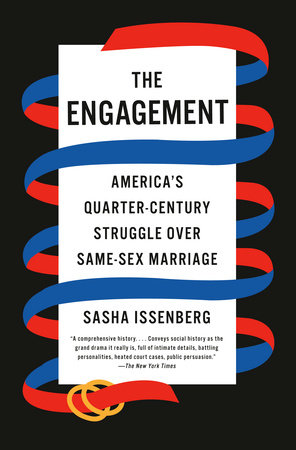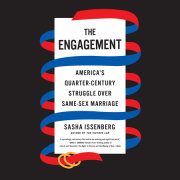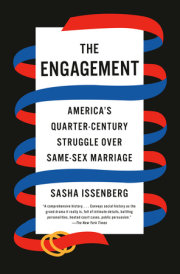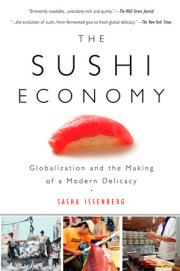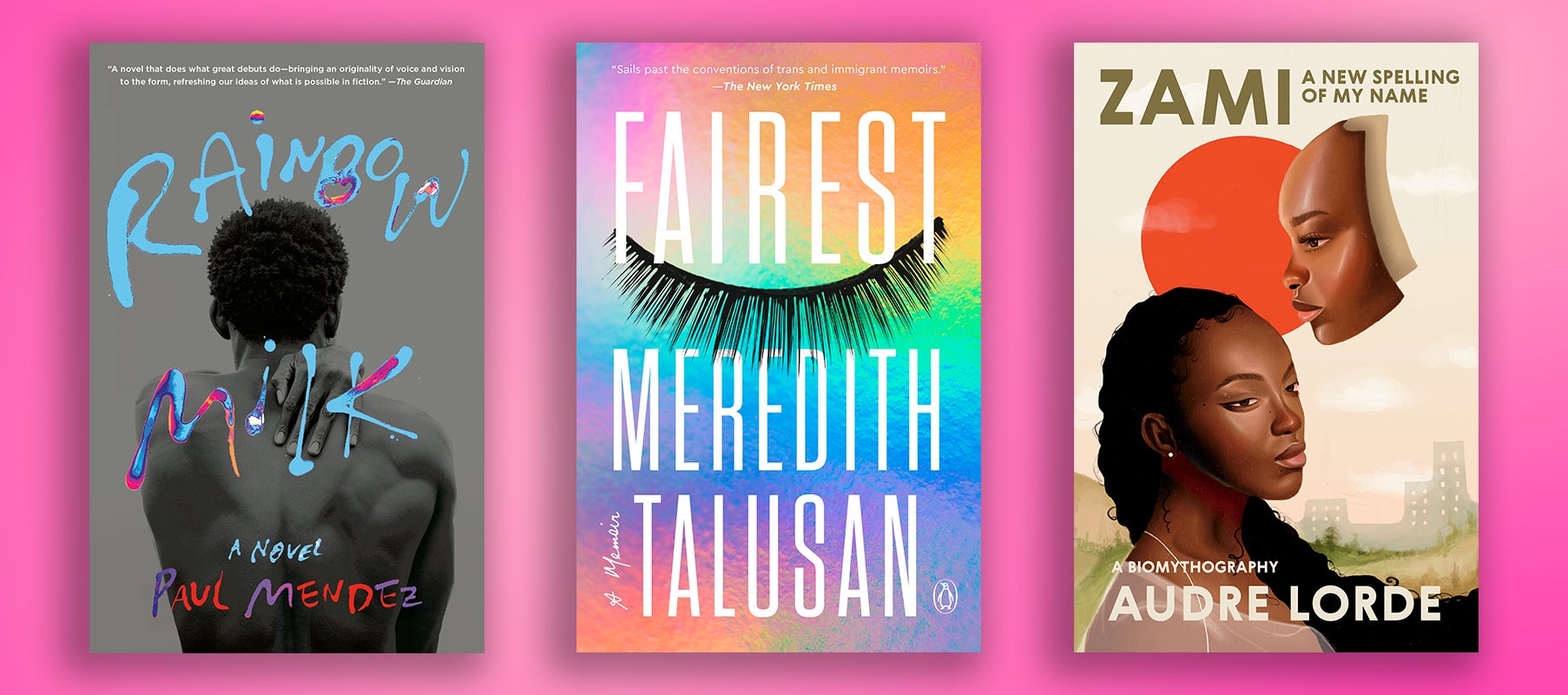Part One
The Love That Ate an Island
(1990–1996)
1
Seeking License
Genora Dancel never thought she would get married. She had first suspected there was something different about her around the age of five when she realized that she preferred holding hands with girls rather than boys. In the schoolyard demography of 1965 she saw herself from a young age as an outlier: the boys concerned themselves with trucks and blocks, the girls played kitchen. Genora was drawn toward the domestic scene, but she resisted the expectations of femininity that accompanied it. I’ll go play with the girls, she thought, but I want to be the one who brings home the bacon. As that inchoate instinct took shape as romantic, and then sexual, self-awareness, Genora envisioned a future that would defy norms, even if it was the only thing that to her felt normal. “I was going to have girlfriends instead of boyfriends,” she recalls. “I always thought that was going to be something I had to deal with. I even thought, I’m going to have to get surgery, but I thought, I’m just a kid, why am I worrying or thinking about stuff like this? I always thought I was going to work it out.”
Her family of Filipino immigrants did little to impose their will on Genora and her two siblings. When Genora turned seven, her mother threw a birthday party and invited all the kids from their Honolulu neighborhood, half of whom she did not know. A march of unfamiliar faces to her front door not only failed to cheer the birthday girl, but actually unsettled her. Afterward, her mother asked Genora if she had had a good time. “I guess so, but I don’t want a birthday party again,” she said. “I just didn’t like having all these strangers in my house.”
A few years later, the family moved out of the city to Ewa Beach, closer to the Navy base where Genora’s father worked as a munitions specialist. On the weekends, while her sister puttered in the kitchen and her brother was out practicing martial arts, Genora would help her father. She learned how to replace a carburetor, fix the family TV and shortwave radio. She took an interest in mechanics. On Mondays, she would return to school and, when exchanging weekend recaps, match classmates’ “I went to the beach” with “I fixed my dad’s car.” “That’s not interesting to a lot of girls,” she recalls.
As she entered adolescence, Genora found it easy to delay the inevitable reckoning with her sexual identity. The family was Catholic, and although the Dancels did not regularly attend church they sent their children to catechism class. Yet as Genora grew up there wasn’t much of a sense of sexual morality imparted to her, and—despite the image of carefree bodies frolicking on beaches—the archipelago seemed to embody a conflicted view of libertinage. The significant influence of Asian cultures tamped down public demonstrations of intimacy, all while a live-and-let-live island mentality promoted a quiet tolerance of what on the mainland had come to be described as “alternate lifestyles.” When Elton John came out as bisexual, a teenaged Genora was jarred by the nationwide backlash among his teenage fans. “Let him be who he wants to be,” she told friends.
In high school, Genora grasped at any possible framework for understanding herself. She would turn down men who asked her out, happy to bluntly inform them that “I’m not that interested in you.” She did not attend her prom, telling friends she did not care to spend the money. At one point, she thought she might be asexual. None of this seemed to worry her parents. In fact, a teenaged daughter who didn’t seem at all distracted by boys meant one fully devoted to her studies.
After college, Genora dated women. She moved in with one girlfriend for nearly two years; after Genora left, the girlfriend eventually settled down with a man, satisfying her parents’ expectation of grandchildren. It became a familiar pattern among Genora’s exes. “I knew that these women were seeing what they wanted to do. They would try it out, but they weren’t really serious about it,” she says. “I knew in the back of my mind that these women wanted to be married to a man and have kids.” The cautious Genora made a quiet resolution of her own, to avoid any “serious relationship in my twenties because I’m still developing.”
Genora was already deeply committed to a career as a broadcast engineer. When she was about seven years old, she had attended the taping of the children’s television program Checkers and Pogo at a local CBS station and was immediately distracted by the group of men cracking jokes off to the side of the soundstage. Throughout the taping, her eyes remained locked on to the crew, who operated heavy machinery in an air-conditioned room and had fun doing it. Genora had attended a two-year technical school in Washington state, and upon graduating she took the test for a Federal Communications Commission broadcast license. She abandoned the goal of teaching after her first job interview, at a California community college, where she was asked to explain luminescence and after doing so was told: “That’s pretty good for a female.” Instead, Genora applied for jobs with television stations and became the first woman to integrate the control rooms at a sequence of Honolulu affiliates. She committed to as much work as she could find, and for six years she held two full-time jobs at different stations, a series of eight-hour shifts starting at midnight.
The busy schedule helped ensure that Genora didn’t date much. When she did, however, Genora kept quiet about it, because in Honolulu and Hawaii—like all but a handful of very progressive jurisdictions—it was still legal to fire someone because he or she was gay. Even so, the studios’ macho environments meant that Genora spent more time fending off approaches from male colleagues than feeling obliged to address her sexual identity around them. “She was just this hot gorgeous girl with this incredible smile, and was very pleasant to everyone,” says C.J. Baehr, who helped launch an educational-programming unit housed at the PBS station, “so of course the men were hitting on her.”
One day in the summer of 1990, Baehr was getting out of her daughter Ninia’s car in the station’s parking lot when Genora appeared before them. “Oh, that beautiful woman Genora is my friend and I think she’s a lesbian,” C.J. told Ninia as she exited the vehicle. “And I think I’d be happy if she were your friend, too.” Ninia, who had just returned that month to Hawaii after years on the mainland, was eager to meet people in the place she would again consider home. She had been out of the closet her whole adult life, and was not at all bashful about approaching women who interested her. The next time Ninia returned to the station she announced herself at the front desk. The receptionist paged Genora over the loudspeaker: “Genora Dancel, C.J. Baehr’s daughter wants to meet you.” Everybody knows C.J. Baehr has a daughter who is a lesbian, Ninia thought.
Genora was among them. A year earlier, she had played board games with C.J. during an office bridal shower, and the two talked at length for the first time about their families. In the parking lot, spotting a woman her own age with fair skin—a telltale sign of a recent arrival from the mainland—in the driver’s seat of the car transporting her coworker, Genora made the connection. Now, sitting in a control room with a colleague, she was startled to hear her name announced on the public-address system, summoned by the woman who had caught her eye earlier. Wow, she’s beautiful, Genora had thought. Why would she want to meet me? She could have anyone.
She exited the control room, tentatively. Upon making eye contact with the woman, who had long straight hair and wore a burnt-orange dress with thin shoulder straps, Genora nervously stumbled in reverse, backing into a wall. “I’m C.J.’s daughter, and I just wanted to meet you,” Ninia said. The two exchanged a few words as others in the office surveilled the awkward scene. Ninia handed a phone number to Genora, who said she’d call. That night the two spoke for hours, concluding with plans for lunch on Saturday.
They headed to a TGI Friday’s and realized quickly that they had been born only four days apart at hospitals not far from each other in Honolulu. But from there, their lives had diverged significantly, and each found herself taken by the unfamiliarity of the other’s biography. Genora, who had barely left Hawaii, was impressed as Ninia recounted her cosmopolitan upbringing: the daughter of lefty academics, she had grown up in Tennessee, Colorado, and Pennsylvania, and overseas in Norway and American Samoa. She had lived most recently on Manhattan’s Lower East Side, working at both a rape crisis center and the women’s-erotica store Eve’s Garden, for which she traveled throughout the summer selling its sex toys at women’s-music festivals. She had returned to Hawaii with a plan to return to school, and hopes of settling down. “I’d see like 8,000 naked lesbians in a weekend and talk to them about their vagina size, and I would think to myself, ‘Wow, I’ve met thousands and thousands of lesbians and there isn’t one for me,’ ” Ninia recalled. “I was just so lonely, thinking I was going to be alone for the rest of my life.”
Genora knew solitude, too, yet as soon as she started recounting her life story Ninia realized how different their two notions of loneliness were. Ninia appreciated that her lunch companion was someone who rarely had the opportunity to open up around other gay people and was discovering an alien comfort. “I felt I could tell her anything,” says Genora. “You can be friends with someone who’s straight, but it’s more interesting to talk to someone who has the same understanding as you about living the gay life, or how life has been for you.”
After lunch, Genora drove Ninia up an extinct volcano to the ridge locals call Tantalus, which in one direction looks out upon the dominant monument on Oahu’s natural landscape—the massive volcanic cone known as Diamond Head—and in the other over the skyline of downtown Honolulu, with its emblems of Pacific modernity. Surrounded by tourists whose eyes remained fixed on their cameras’ viewfinders, Genora took little interest in the panorama. Instead she was excited to show off her silver Porsche 928, explaining how she had fixed up the used vehicle herself and opening the hood to reveal its engine. She could tell Ninia had little interest in cars, but thought she was being a good sport, and the two retreated afterward to Kailua, near Ninia’s mother’s house, where they bought a pizza to share on the beach. Their lunch date ended up lasting nine hours.
Baehr and Dancel started scheduling dates to meet with their motorcycles. They would circle the island counterclockwise, a trip that took two and a half hours, unless there was a surfing event on the North Shore, when traffic would back up next to the shrimp trucks, and without accounting for a brunch stop at the Turtle Bay Resort. Dancel was proud that she rode only a BMW, a heavier, shift-driven bike that guaranteed a smoother ride; she looked disapprovingly on Baehr’s preference for a smaller Kawasaki, which allowed the rider to rest both feet on the ground. It didn’t much matter, though: Baehr seemed more comfortable straddling behind Dancel on her bike as they went for a ride. “I think she wanted to be the passenger more than a rider,” Dancel said.
When it came to politics, those roles were reversed. Genora had always kept her distance from advocacy, out of both disinterest and a shyness that predisposed her against putting herself in the center of attention. When they first started dating, Genora attended one of Ninia’s talks and sat in the front row with her eyes fixated on a Nintendo Game Boy device on which she played Tetris. “She hunkered down, almost disappeared, because she was afraid she’d have to say something public,” recalls Ninia’s mother.
Ninia and Genora amounted to a striking couple. Genora stuck to collared shirts and had a boxy visage, demarcated by a strong, orthogonal jaw. Ninia preferred sinuous floral-print dresses and kept her hair in a bob rounded along the contours of her teardrop-shaped face, a set of aesthetic choices that happened to match their communication styles. Ninia was an expansive speaker who used flowing sentences; Genora was often hesitant and halting in conversation. But they felt completely at ease with each other. Pretty soon, Ninia, who was still living with her mother, began staying regularly at Genora’s home in Waipahu, on the other side of Honolulu. During her overnight shifts at the Fox affiliate, Genora would sometimes sneak away from the control room for an hour when her station went off the air and drive to Kailua to see Ninia. When Ninia took a job as codirector of the University of Hawaii’s women’s center, Genora would often walk up the hill from the television station at midday to bring her girlfriend lunch. Within their first two weeks of dating, Ninia told her mother she had “this feeling I’m going to be with this woman for the rest of our lives.”
That fall, less than three months later, Genora reached the same conclusion. She had traveled to Washington, DC, for a two-week course at George Washington University on satellite broadcasting. Afterward, she would fly to San Jose for a one-week training in Sony Betacam technology. It was the first time the pair had found themselves apart since meeting, and as Genora wandered alone through a shopping mall one afternoon, a ruby ring caught her attention. Ninia had mentioned her fondness for rubies, and Genora entered the store and had one sized to fit her lover’s ring finger. Days later, Genora sat in her hotel room, clasping the ring in one hand and a phone in the other, as she proposed to Ninia. There wasn’t a language for what she was asking or offering. “I just wanted to have a life with her,” Genora says. “I thought our love could prevail over anything.”
Ninia said yes, but the word carried little weight beyond the phone call. There was only one place in the world where government recognized vows between people of the same sex. In May 1989, following a forty-year campaign by activists, the Danish parliament had approved “registered partnerships.” The designation afforded gay and lesbian couples many of the legal entitlements and responsibilities of marriage—with the notable exception of the right to adopt—while pointedly omitting the word marriage. When Genora returned to Hawaii and handed Ninia the ring, the two thought they had entered into little more than an “emotional agreement” with each other, as the latter put it, and didn’t even tell their friends or family about the commitment they had made.
Copyright © 2020 by Sasha Issenberg. All rights reserved. No part of this excerpt may be reproduced or reprinted without permission in writing from the publisher.

